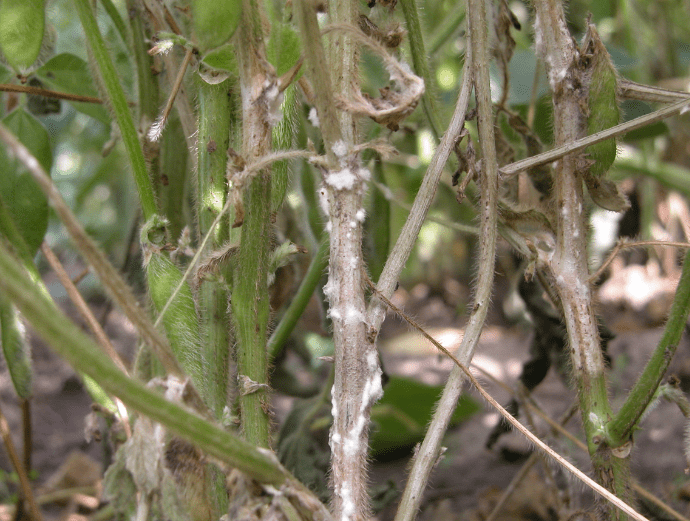White Mold
The fungus Sclerotinia sclerotiorum causes white mold, thriving in cool, damp environments. The soybeans have a gray-green appearance from the field’s edge.
Here are seven suggestions for preventing and controlling soybean white mold:
1. Select a variety that is resistant to white mold
The most effective way to deal with white mold is to choose a type. Consider the benefits and drawbacks of using the latest trait varieties if your fields have a history of white mold.
Use a soybean variety that you’ve been planting for several years and know does well against white mold in your most vulnerable fields. Keep newer traits on the ground without a history of white mold, at least until their performance has been proven.
2. Keep crop rotation in mind
If you had soybeans planted last year, you’d most likely rotate them to corn or wheat this year to avoid white mold. However, if you had white mold in soybean fields in 2018, switched to corn in 2019, and then back to soybeans in 2019, the sclerotia bodies that caused the white mold are still in the soil.
If the weather is cool, cloudy, wet, and humid in July and August, the disease will thrive.
3. Keep an eye on fields with a lot of fertility
White mold thrives in tall, bushy, canopied, high-yielding soybean plants because they attract more moisture.
Integrate alternative control strategies to fight white mold, such as fungicide treatment, if you have fields with many manure records and high fertility stages in your soil tests — especially phosphorus. Don’t skimp on the fertilizer.
4. Apply the fungicide at the right time
Apothecia, which resemble tiny mushrooms and release spores, sprout from Sclerotia bodies. White mold is almost always caused by spores infecting a soybean plant through a dead flower that has been pollinated but has not yet formed a pod.
It’s best to apply a fungicide when you start seeing flowers on your soybean plants, especially before those flowers begin to die. This usually happens in early July, about halfway through the R1 growth stage (flowering initiation) and before the R2 growth stage (full flowering).
5. Take the initiative
White mold is difficult to control because you must make management decisions about it a month to two months before noticing any signs or symptoms. It’s nearly impossible to find apothecia. They’re small and have a short lifespan.
To stay ahead of the disease, you must use the percentage of flowering plants or the calendar date. It’s too late to stop white mold from growing on soybean plant stems when you notice it.
6. Don’t count on a seed treatment to solve your white mold issue
While some seed treatments may help control white mold, they aren’t as effective as foliar-applied fungicides at preventing the disease. Both can be employed as part of a white mold management program.
7. Understand the herbicide’s potential
If used at the start of flowering, specific Group 14 herbicides and protoporphyrinogen oxidase (PPO) inhibitors can stimulate the systemic acquired resistance (SAR) mode of action, which can help reduce white mold damage.
Remember that a Group 14 herbicide “burns” the soybean plant, causing it to respond with white mold. Although you may lose some top-end yield, this is an effective treatment if you do get white mold in your fields.
Discuss your soybeans’ best white mold management strategy with your trusted advisor.























